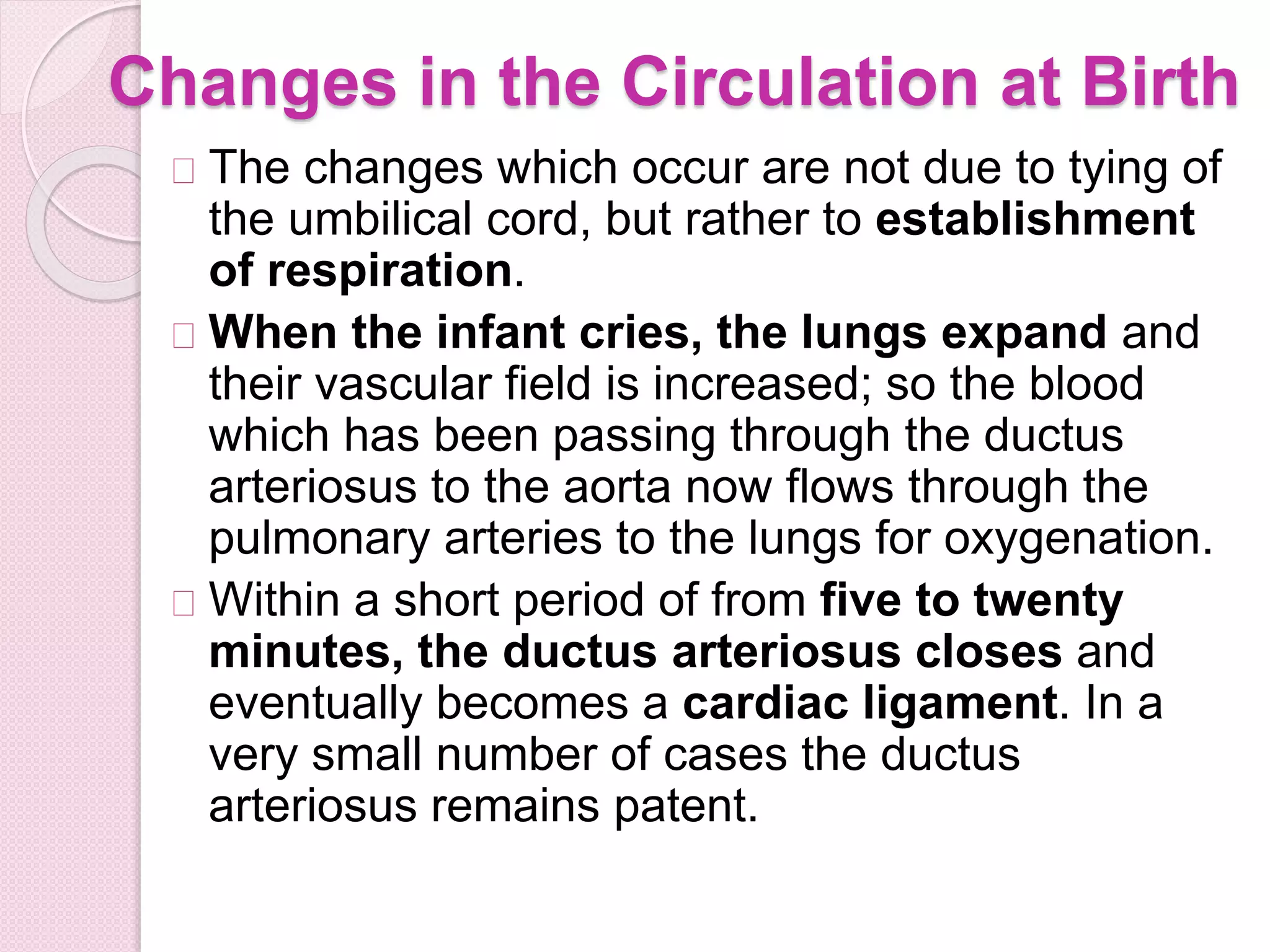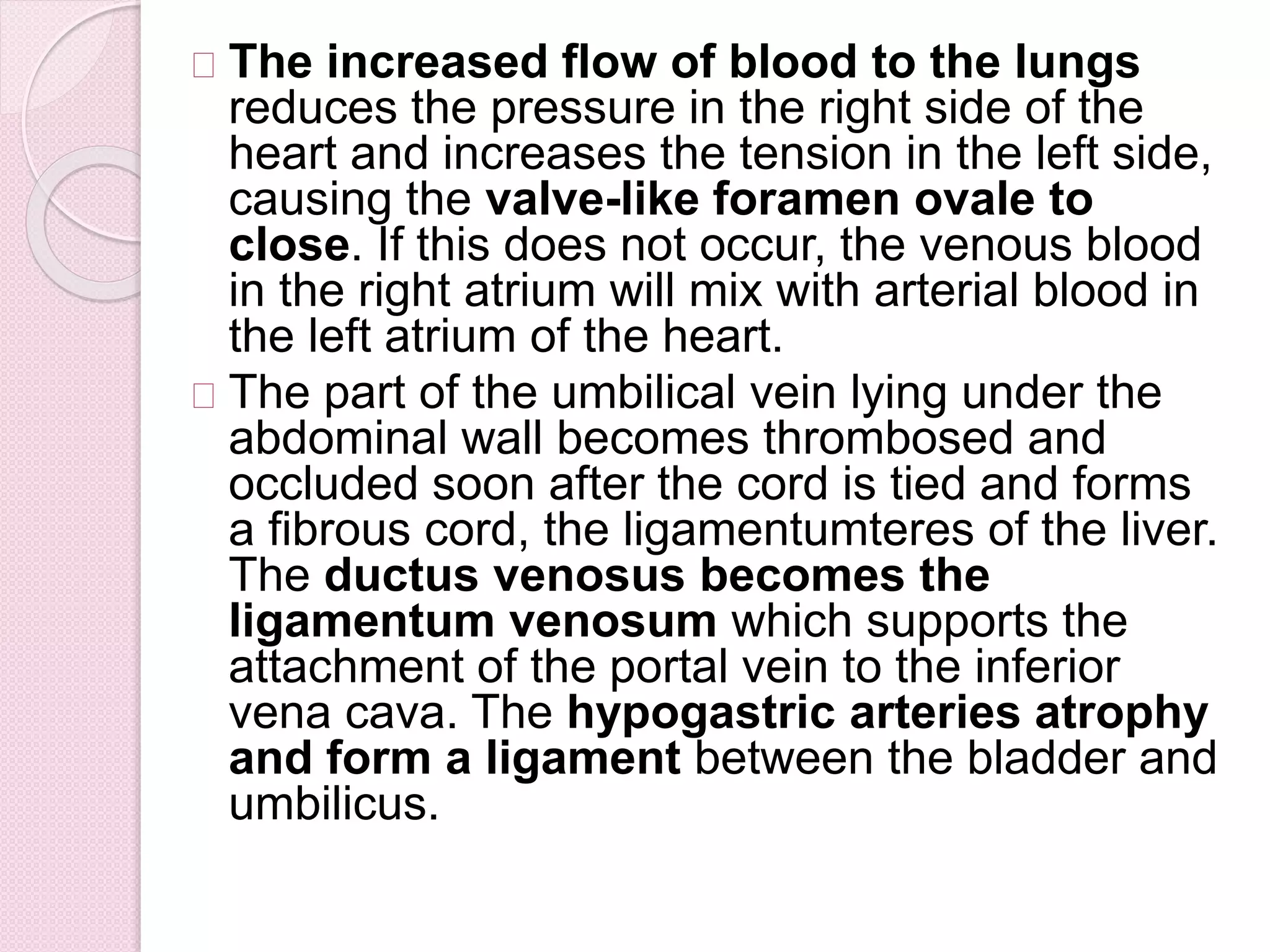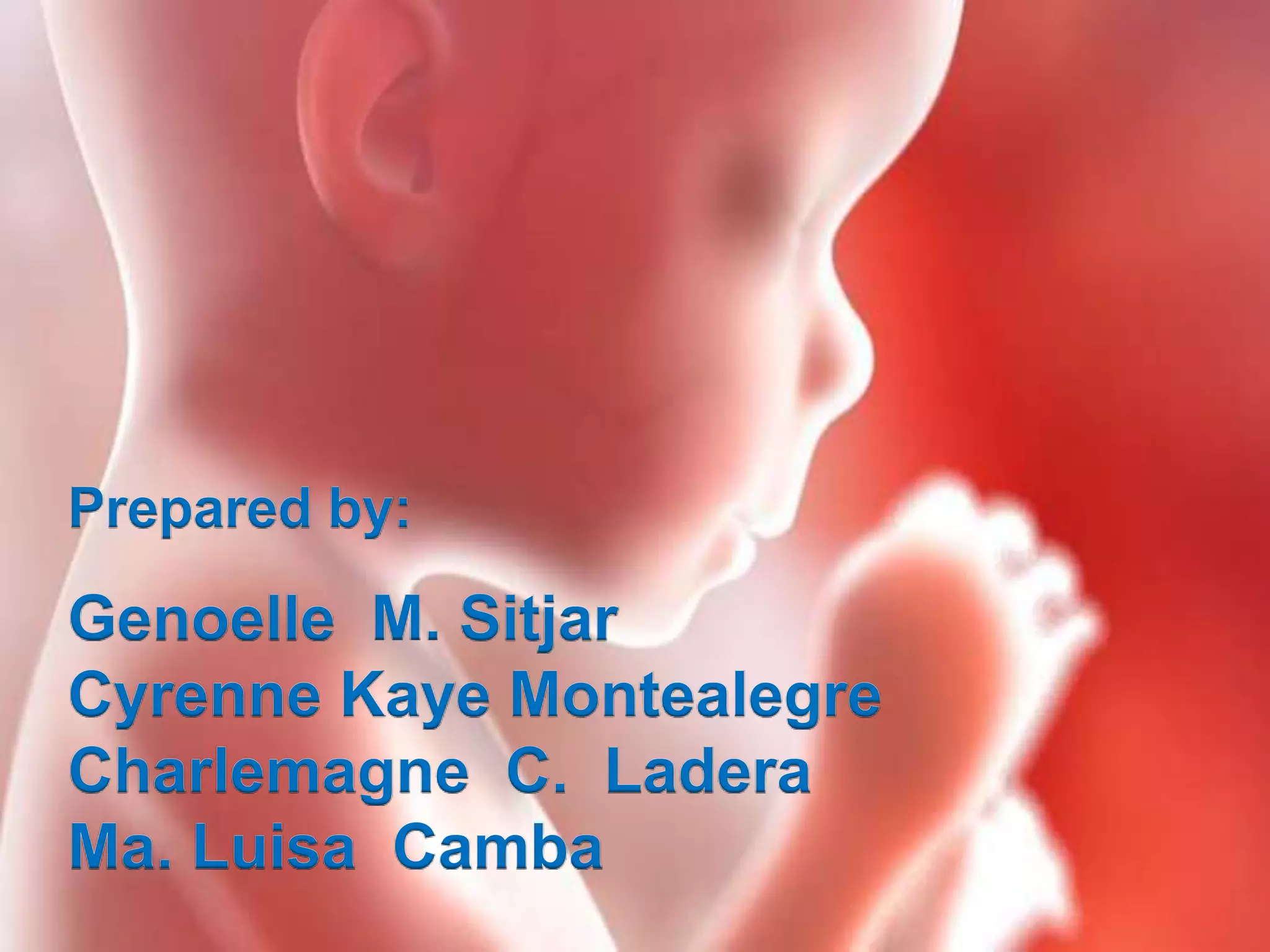The fetal circulation differs from adult circulation in that the fetus receives oxygen and nutrients from the mother via the placenta and umbilical cord, as the lungs are not functional. Blood from the placenta enters the umbilical vein and most of it bypasses the liver through the ductus venosus to the inferior vena cava. It then flows through the foramen ovale into the left atrium and ventricle before being pumped through the aorta to supply the fetus. At birth, crying causes lung expansion which redirects blood flow through the pulmonary arteries, closing the ductus arteriosus and foramen ovale to establish postnatal circulation.
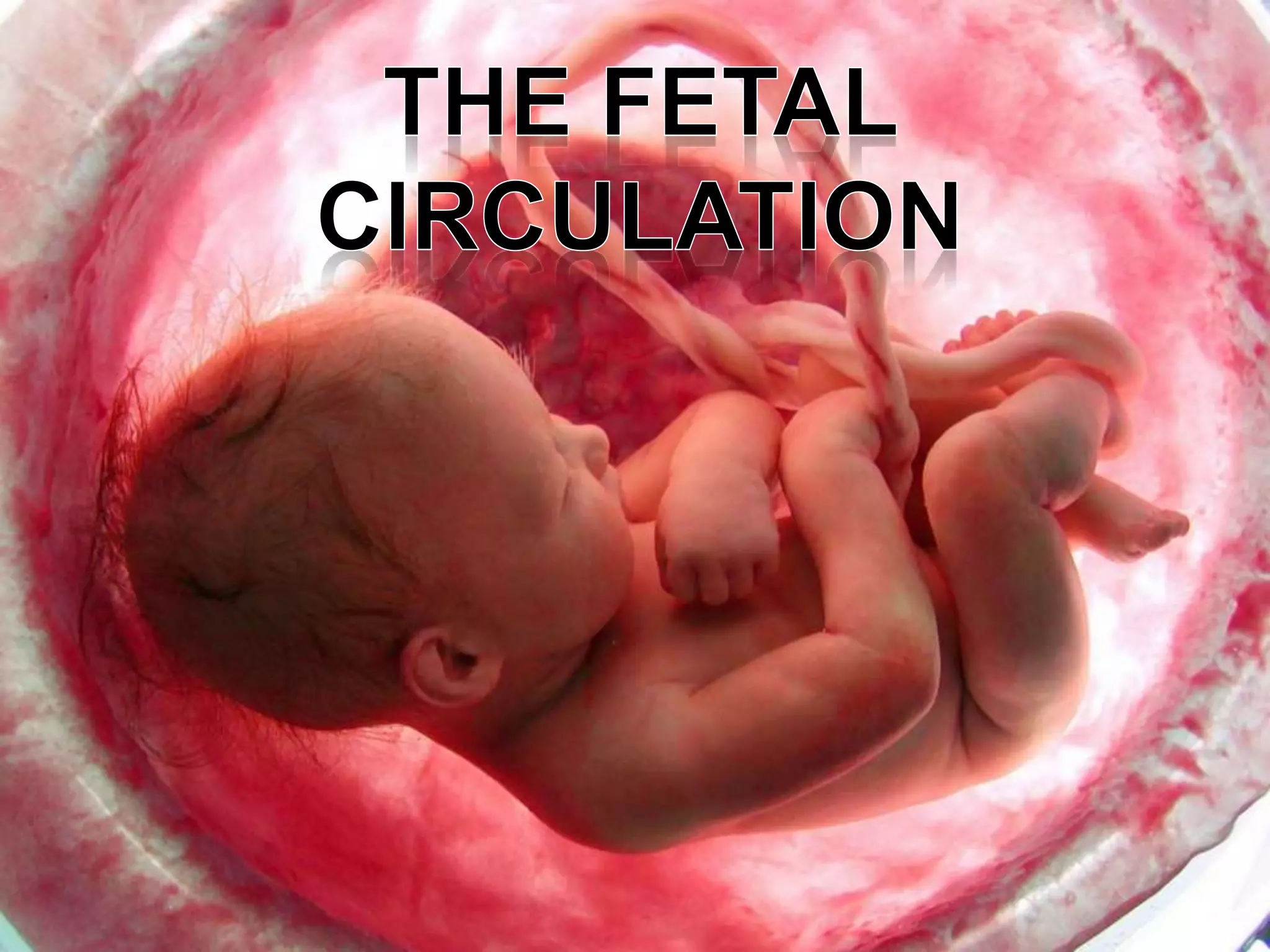

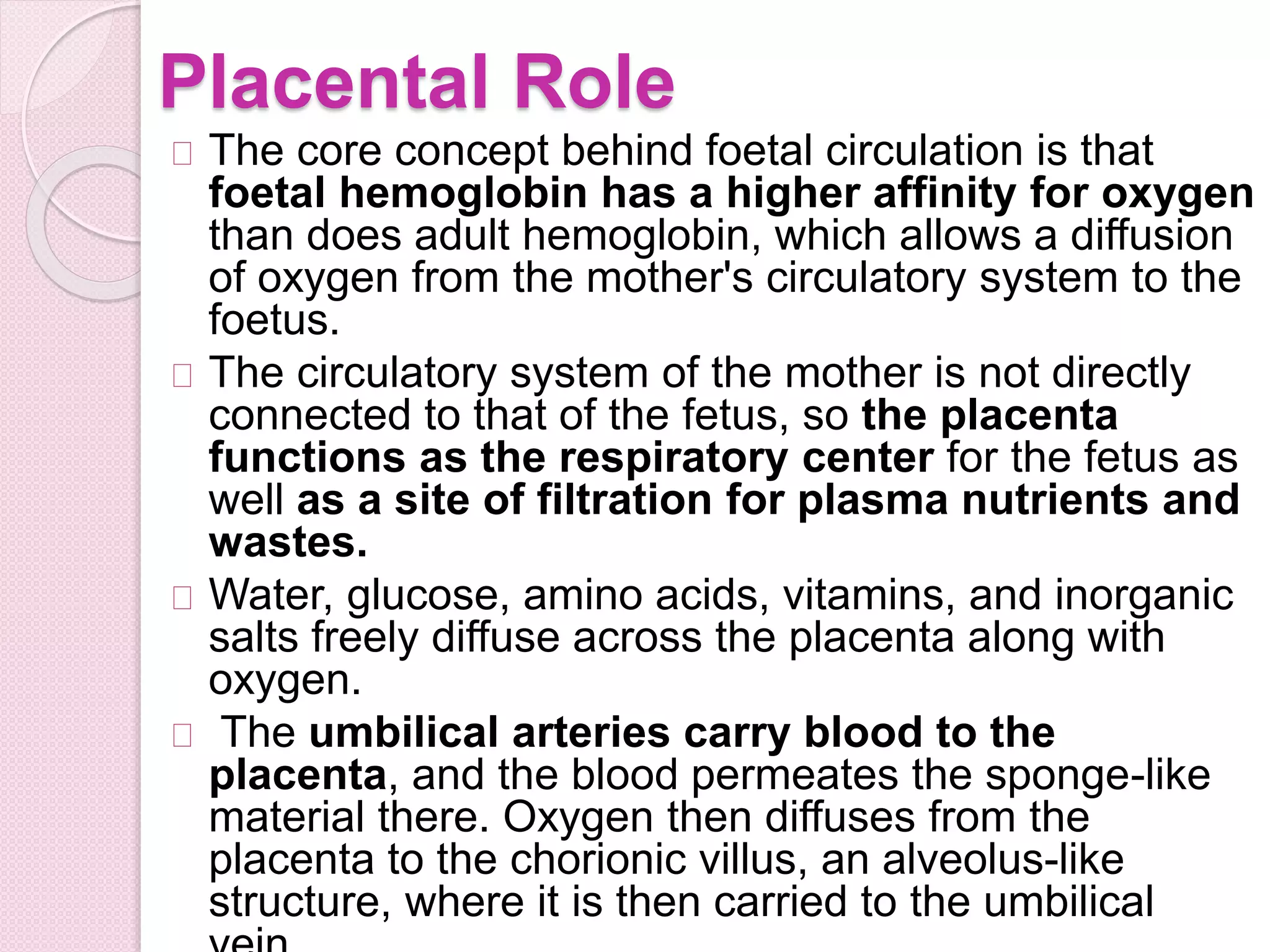
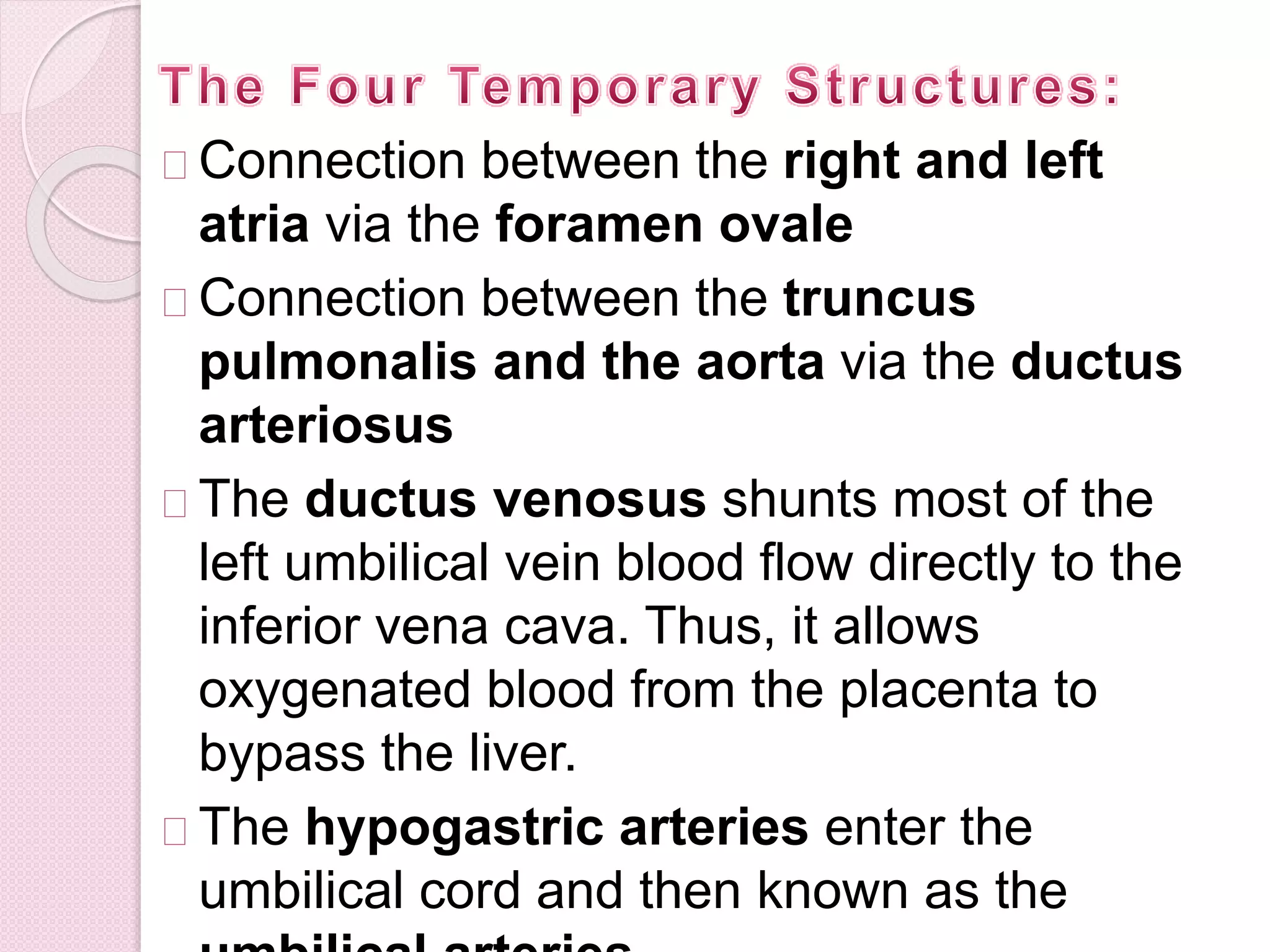

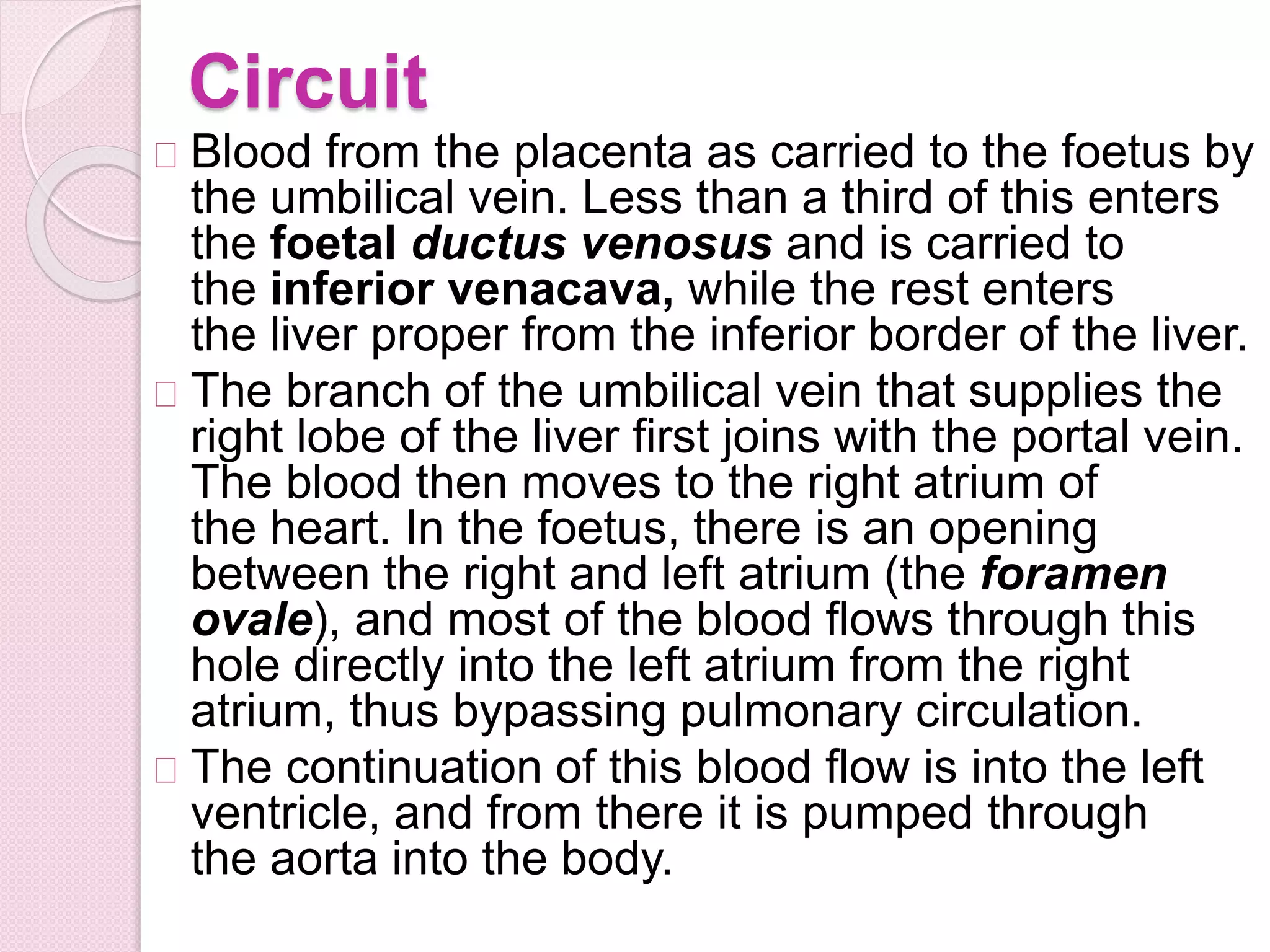
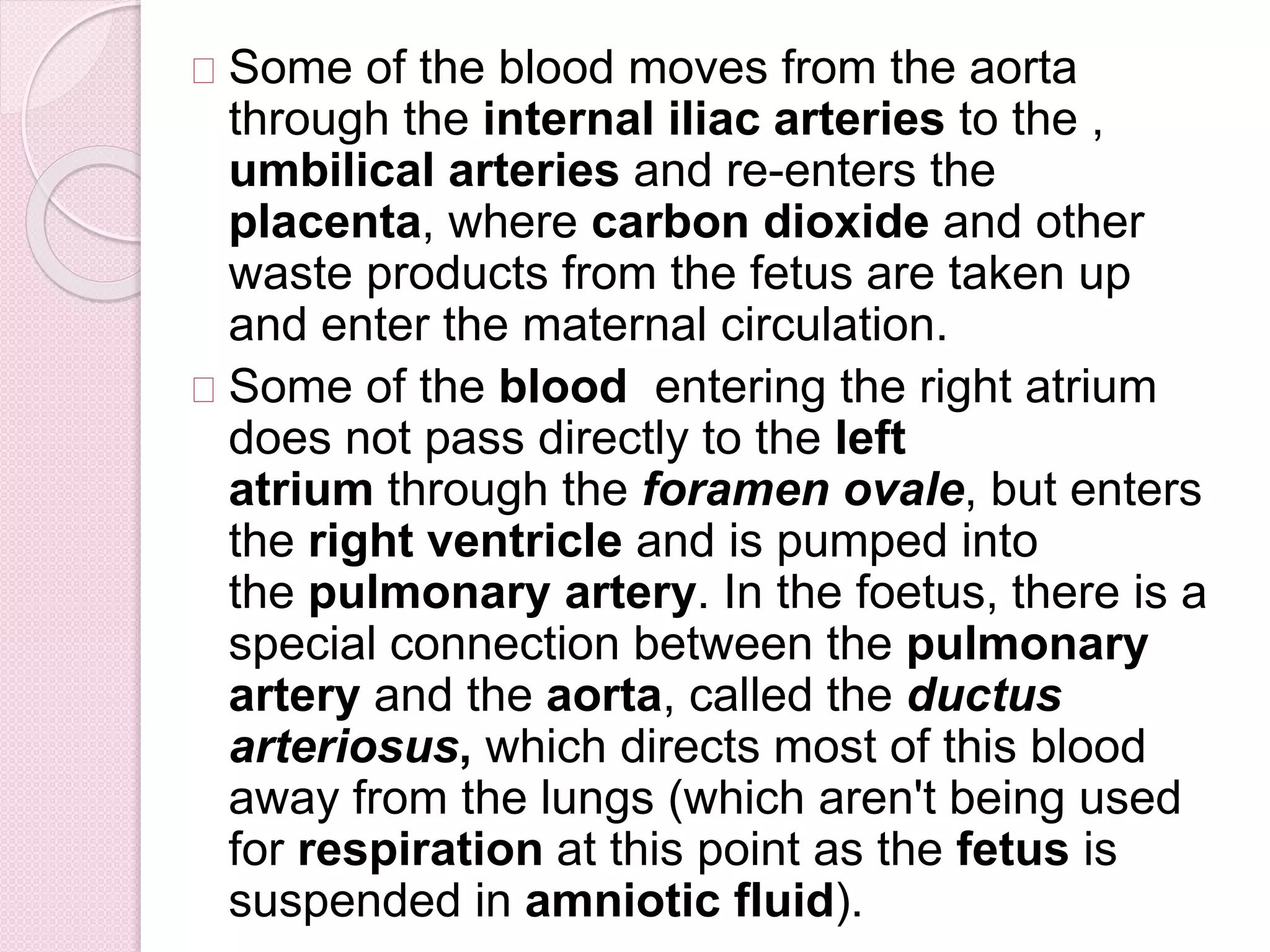
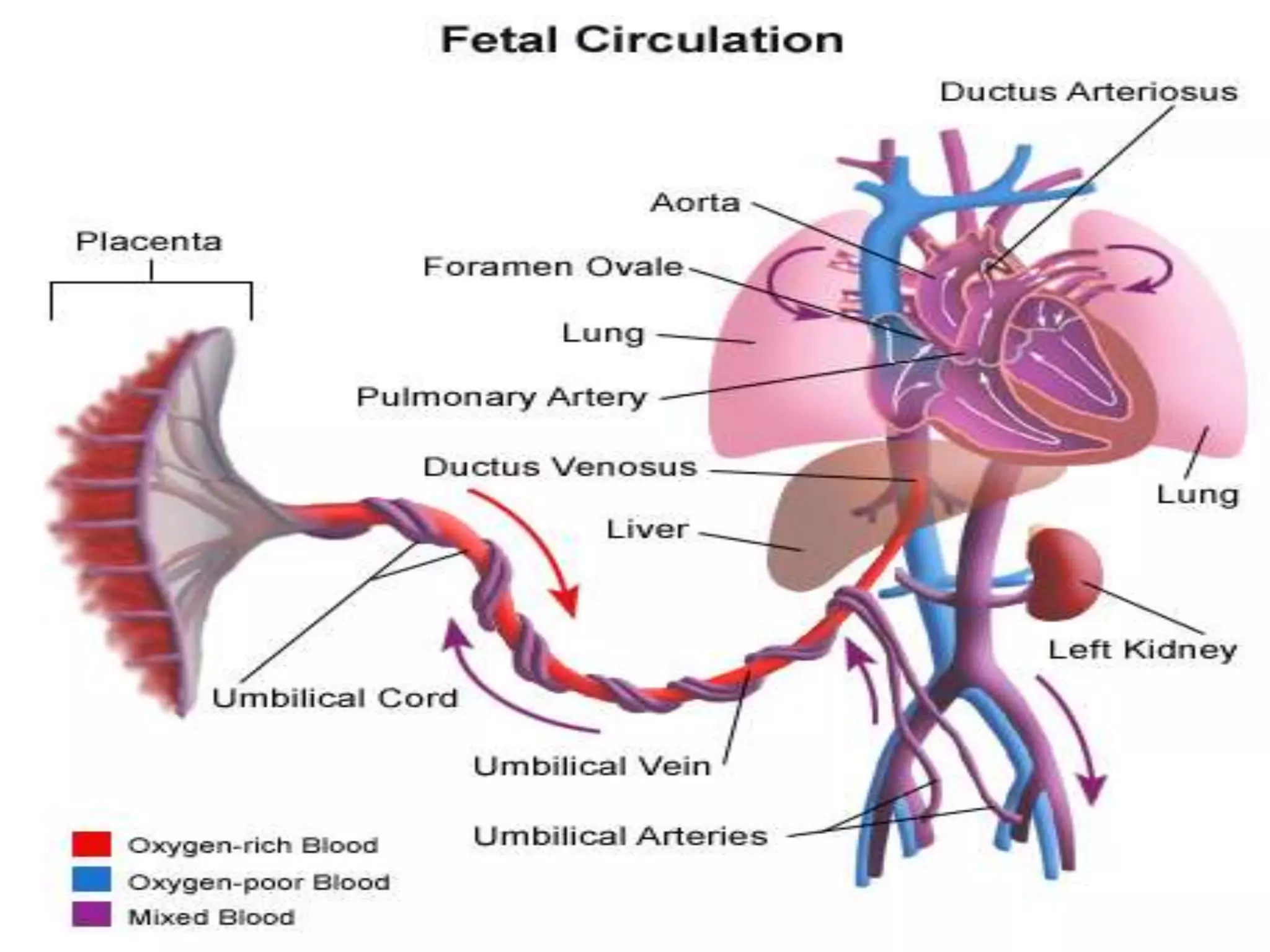
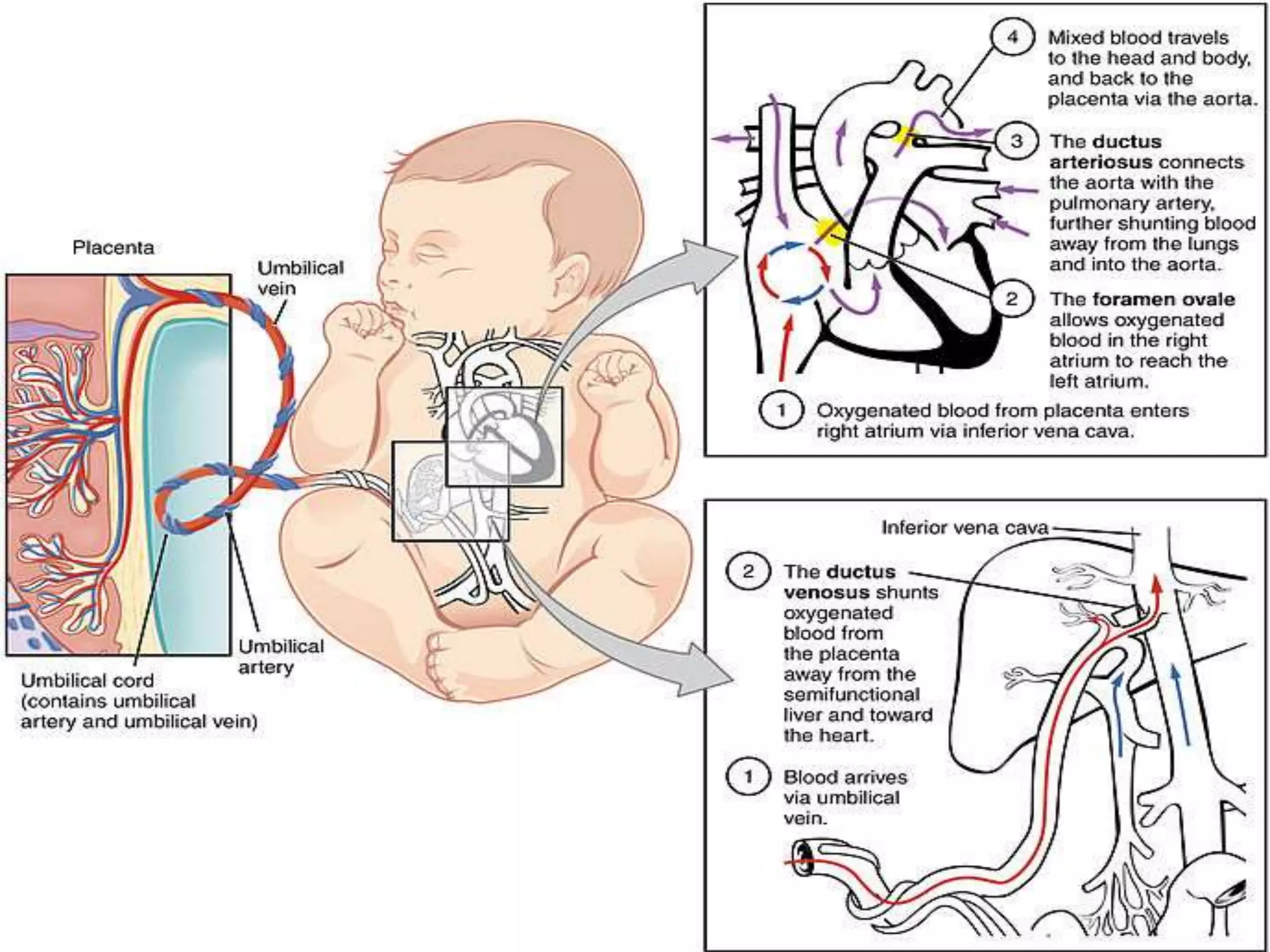
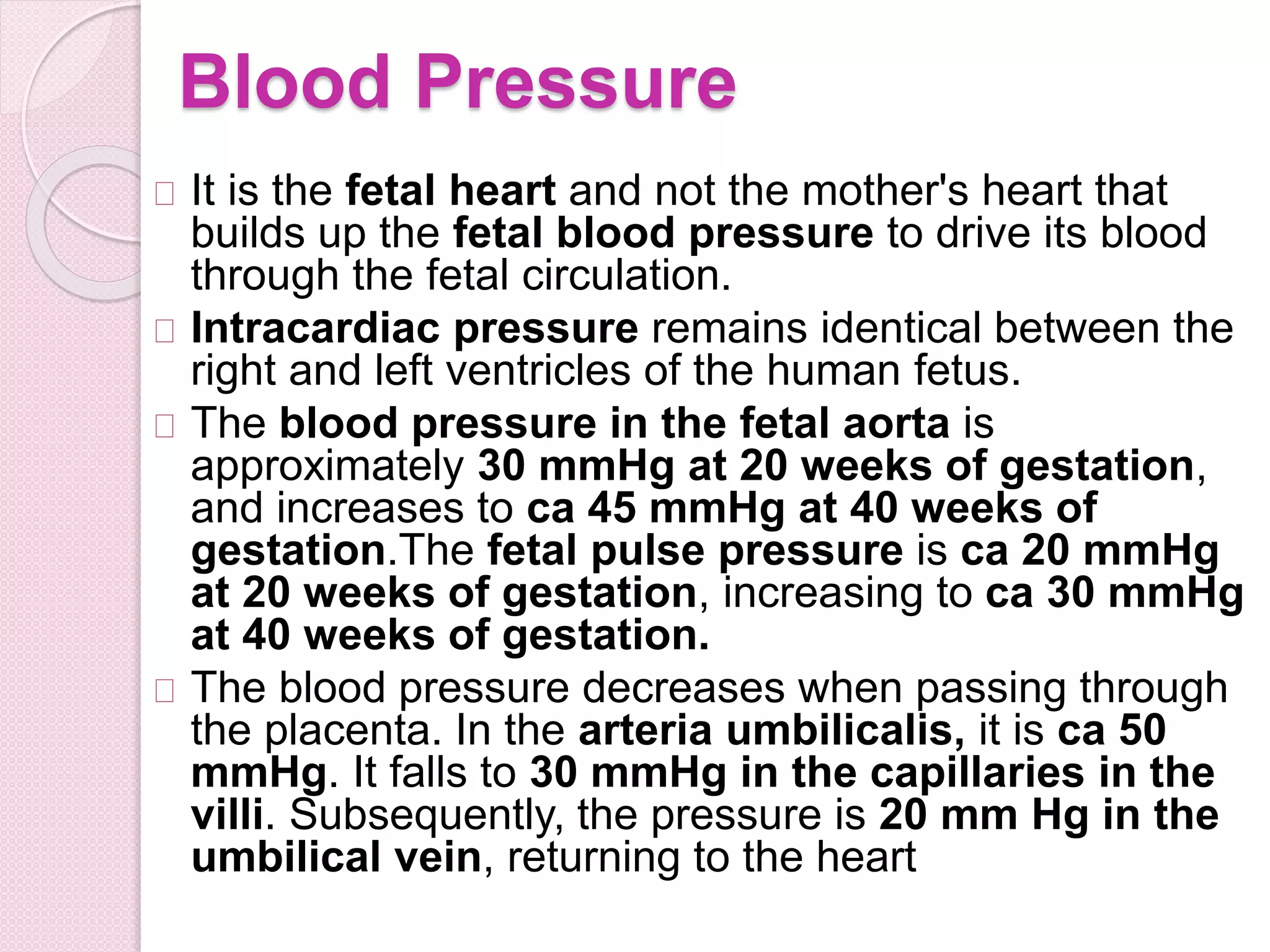
![Flow
The blood flow through the umbilical cord is
approximately 35 mL/min at 20 weeks, and
240 mL/min at 40 weeks of gestation.
Adapted to the weight of the fetus, this
corresponds to 115 mL/min/kg at 20 weeks
and 64 mL/min/kg at 40 weeks. It corresponds
to 17% of the combined cardiac output of the
fetus at 10 weeks, and 33% at 20 weeks of
gestation.[6]
Endothelin and prostanoids
cause vasoconstriction in placental arteries,
while nitric oxide causes vasodilation. On the
other hand, there is no neural vascular
regulation, and catecholamines have only
little effect.](https://image.slidesharecdn.com/thefetalcirculation-140802065924-phpapp02/75/The-fetal-circulation-11-2048.jpg)
